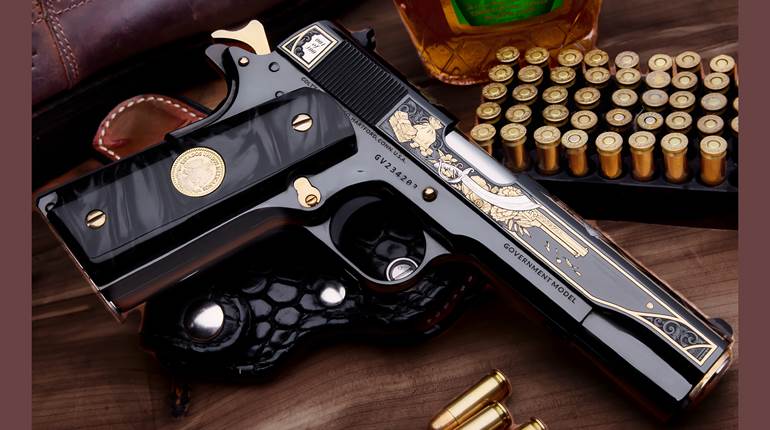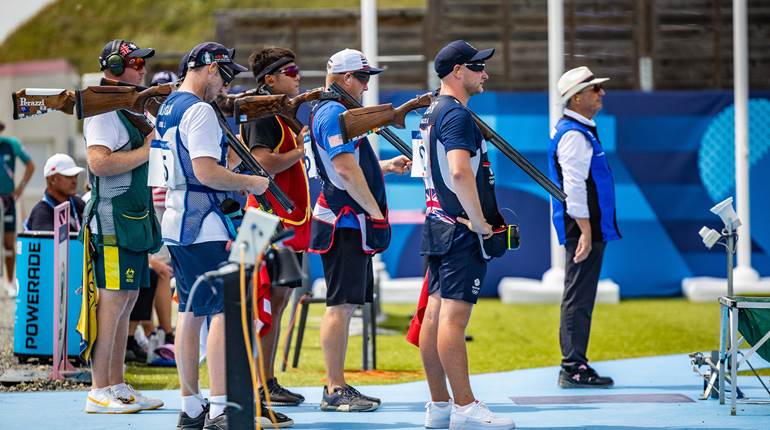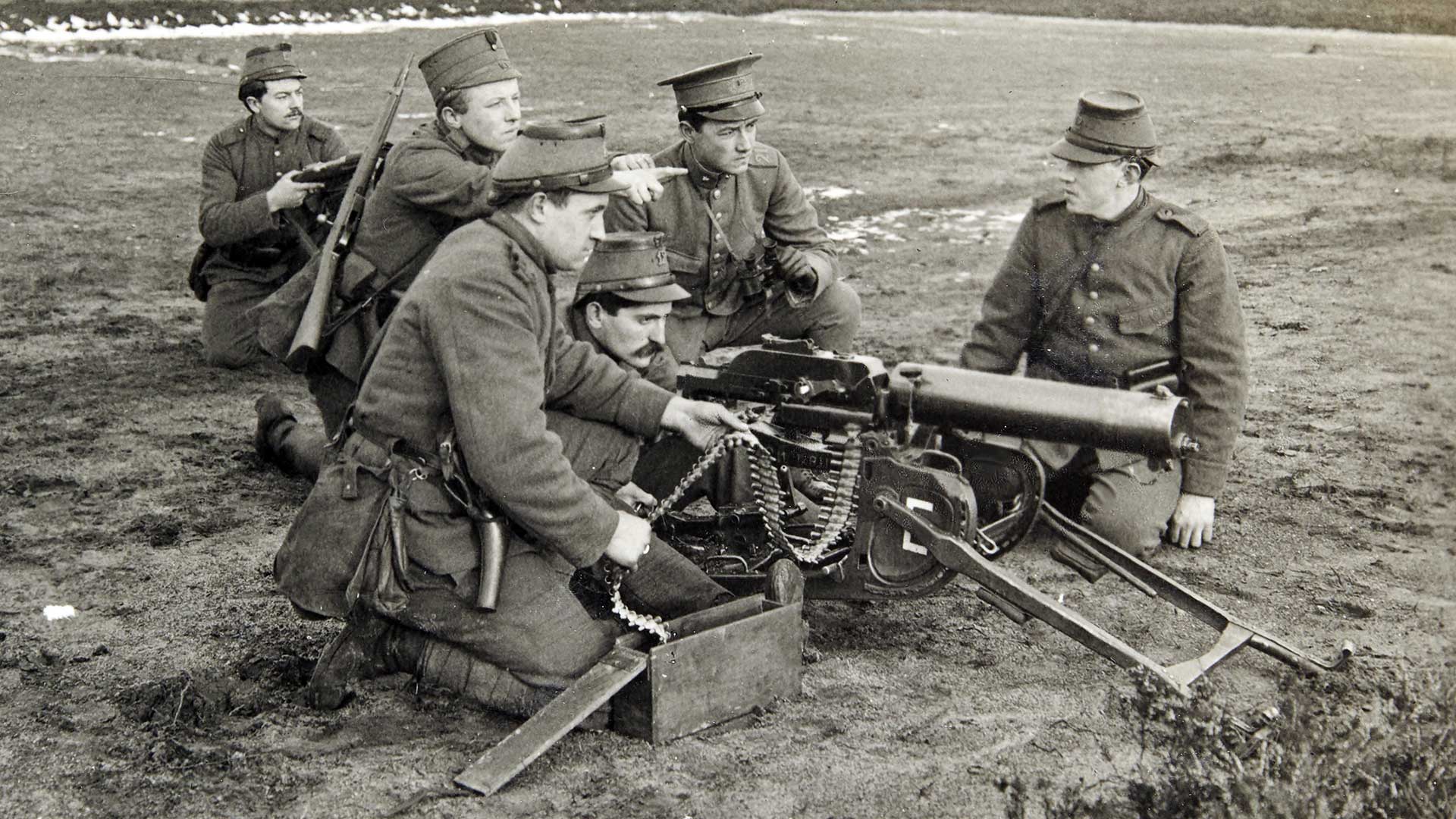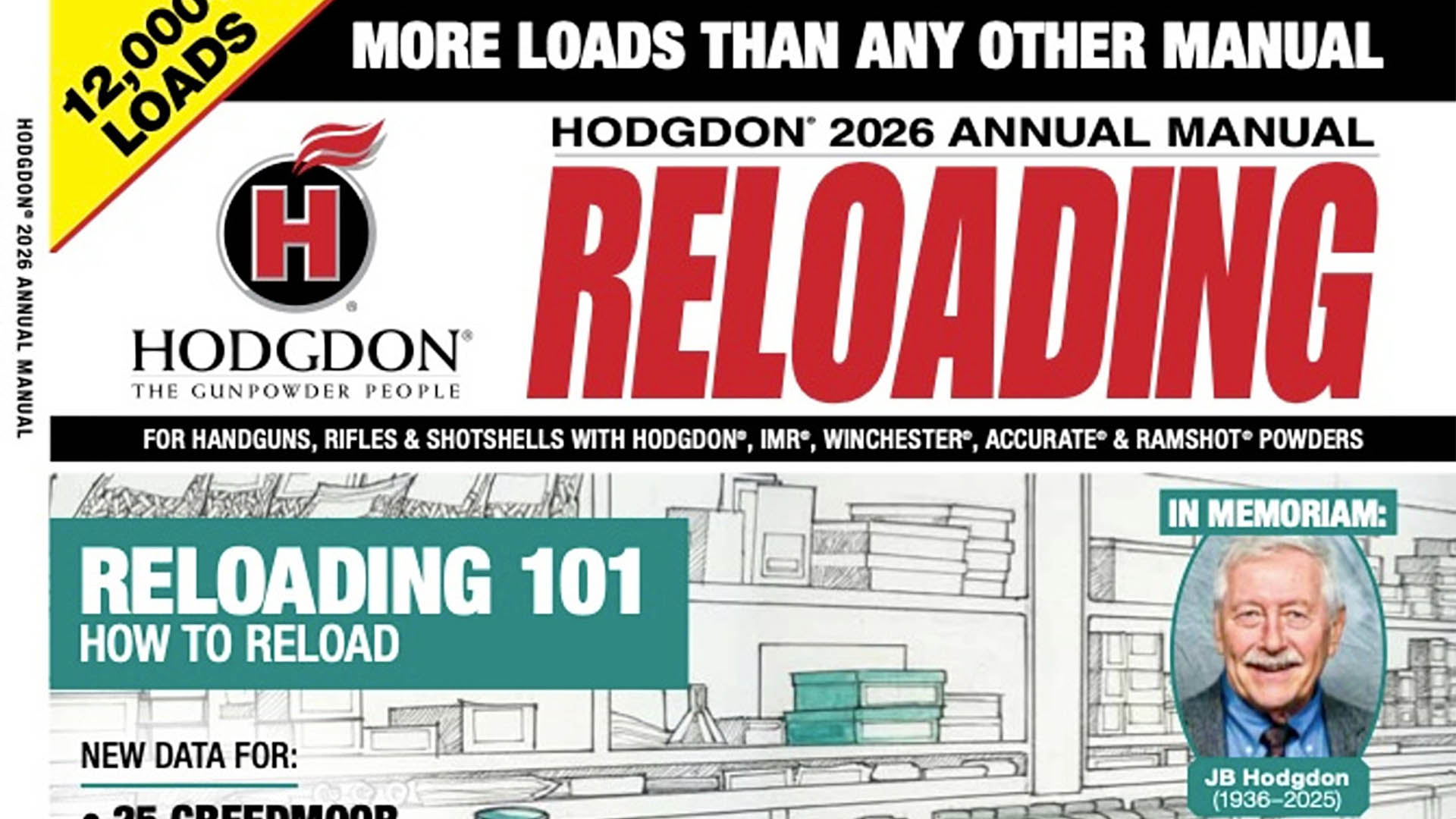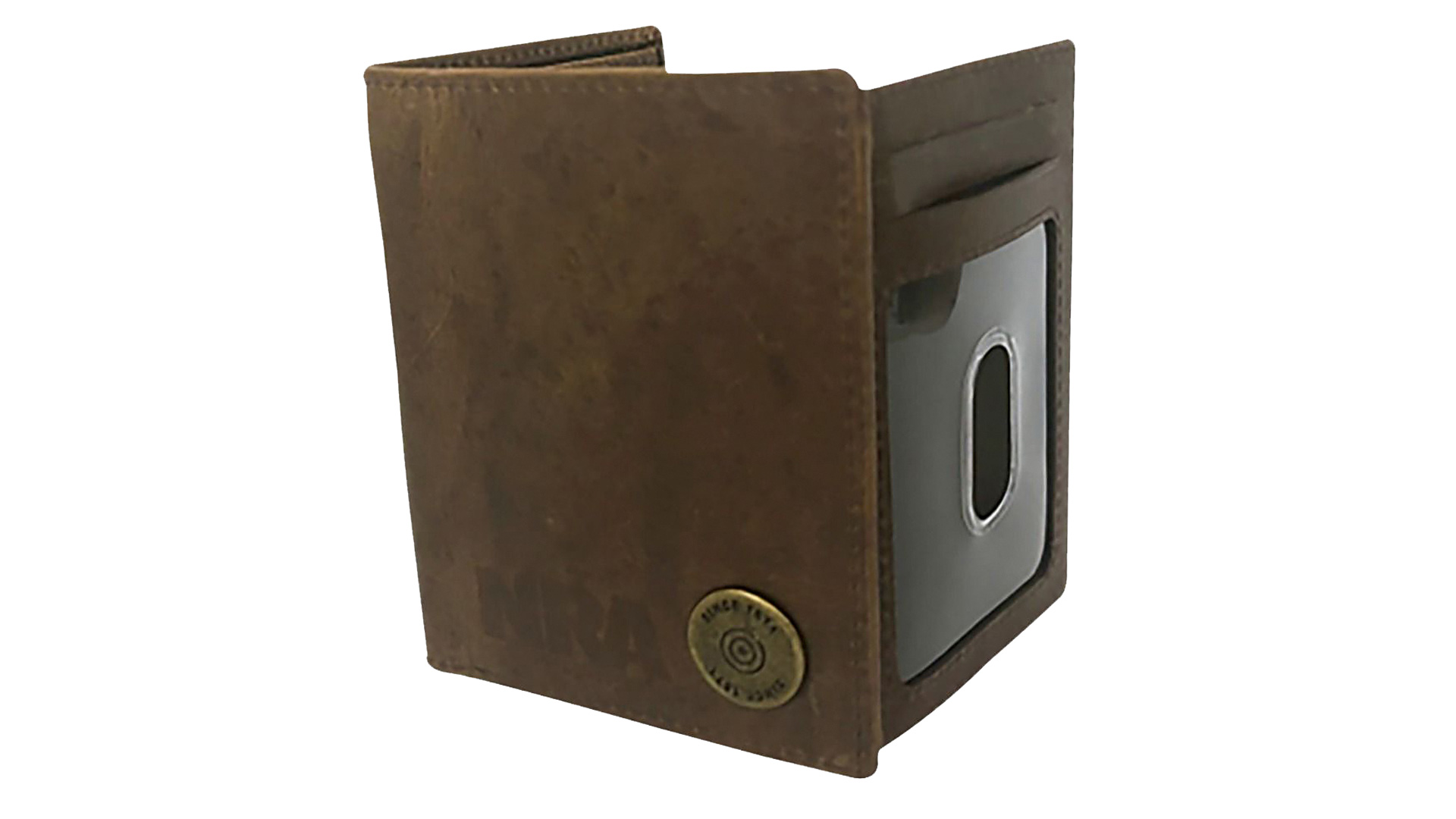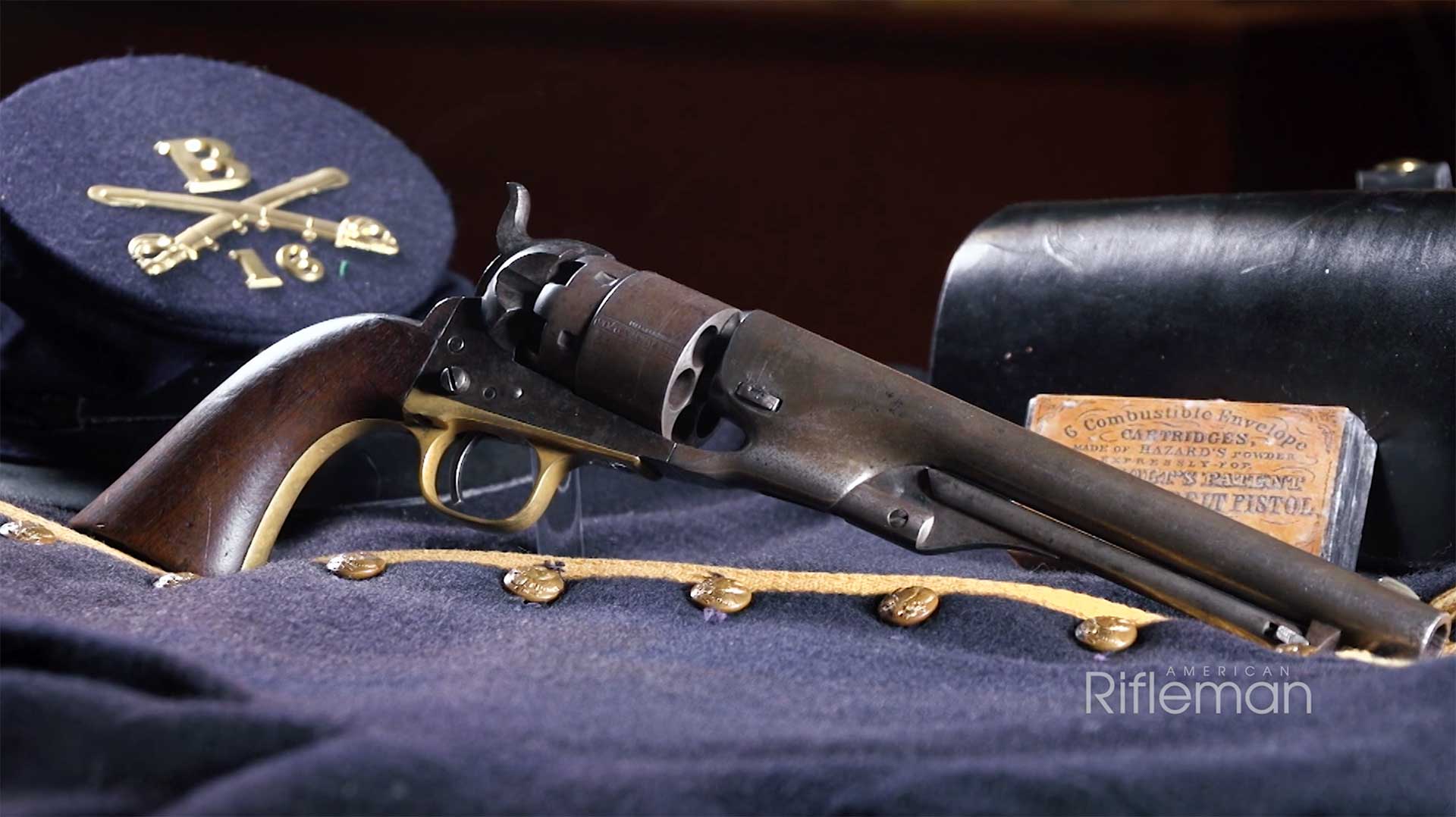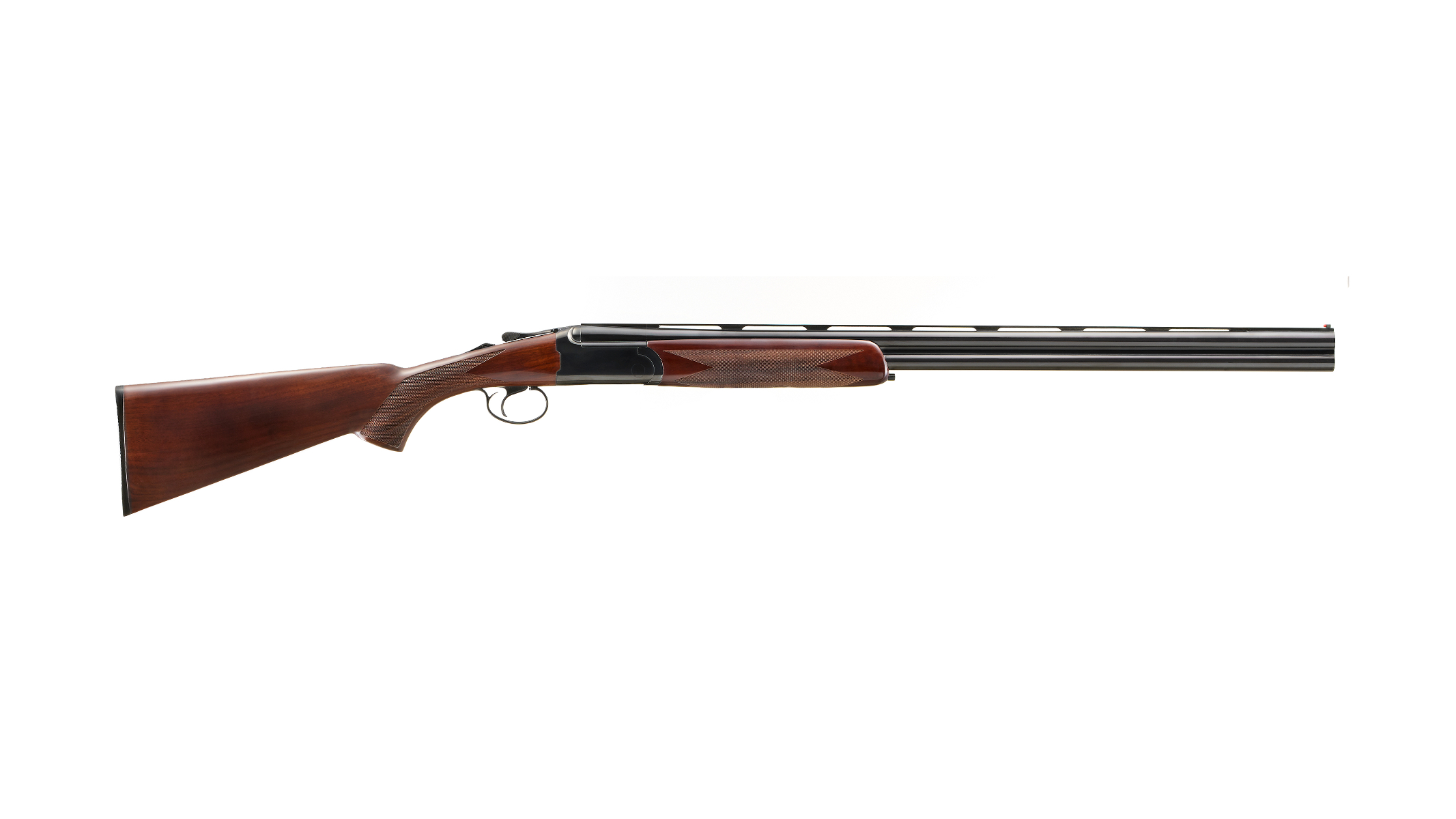
Top: "Miami Vice" version of the Bren Ten, ifmdb.org image
Just shortly before the .40 S&W came along to better arm the nation's police, we went through a period of great interest in the 10 mm Auto cartridge. That was the mid-to-late 1980s. An interesting caliber, the 10 mm was initially a southern California wildcat. It used handmade brass and S&W 180-gr. 38-40 bullets from Remington. When Norma began to make factory ammo and the Bren Ten pistol was developing, the cartridge looked like it might have a future. But the Bren Ten failed (for business reasons) and the 10 had no home. Colt went out on a limb and chambered a 1911 called the Delta Elite and the race was on. Smith & Wesson came up with several models, one of which became standard with the FBI, and the new Glock in 10 mm was the first long action pistol for the Austrian firm (not the .45). In a relatively short period of time, there were a number of 10 mm service pistols available. That includes a very interesting pistol from Spain—the Star Megastar.

S&W Model 1006 and Glock G20
But 10 mm popularity was short-lived. Probably a bit more robust than necessary, the 10 mm of those years delivered a 180-gr. bullet at 1150 feet per second. As loaded for use by the Feds, velocity dropped to 950 fps. That is the exact recipe for the new .40 S&W cartridge, which was short enough to fit in 9 mm-dimensioned magazines. The result of all this was a service pistol that commonly accepted a few more rounds of .40 caliber ammo than any reasonably sized auto in 10 mm. Add to that a growing reputation for short service lives for 10 mm pistols and you have too many shooters turning away from the Ten. Well into the 1990s, one company after another gave up on the concept and dropped 10 mm pistols and some varieties of 10 mm ammunition. The major ammunition makers usually kept one or two of the more popular 10 mm loads in their catalog, but the greater developmental effort went to the burgeoning .40 S&W. There was a flurry of interest in the cartridge when S&W introduced the Model 610, an N-frame revolver that headspaced 10 mm cartridges in full-moon clips. In the big picture, the 10 mm was fading.
But then something curious began to happen. A small but steadily growing interest in the 10 mm as a sportsman's cartridge began to appear. The 10 mm has always been described as near the .41 Magnum in performance. That is unquestionably true in the sense that the Magnum is somewhat ahead of the 10 mm in speed, but closer than any other handgun round. For an outdoors guy who shoots an auto, a 10 mm might make sense. As a defensive pistol in wilderness scenarios, where the target might be various pack animals—wolves, hyenas, jackals, hogs or even the big African cats—the 10 mm is a viable choice as an emergency gun. For bigger animals, any handgun round is marginal, but the capacity of the 10 mm autos helps out here. And there are growing numbers of hunters who have gone through the same reasoning process who simply enjoy the challenge of getting close to a deer with an accurate auto. Obviously, the gun is far easier to carry than any long gun.
Without a lot of fanfare, the 10 mm concept has crept back into shooter interest. The 10 mm cartridge, when compared with the beloved .45 ACP, has about 30 percent greater energy. That fact alone makes it an effective defensive round. Since the cartridge is slightly smaller in diameter than the .45 (but the same length), the 10 mm single stack magazine is usually holding or two more rounds. When you notch it up with a double stack tube, you can get as many as 14 (+1). Those who prize magnum-class power are going to look at this and comment that .357, .41 and even .44 Mag. pistols have been made. True enough, but they are huge pistols that are difficult to carry as a matter of routine. There are places in this troubled world—and daily-occurring situations—where a high-capacity pistol that delivers hits at the upper edge of pistol performance is a very useful survival tool.
So the industry is at a point where you have a good range of choices in 10 mm pistols. If you do want a high-capacity gun, there are fewer choices available than with the 1911-single stacks, but they are good choices. One of the first pistols to be made in 10 mm is the Glock 20 and it is still available in a couple of variations. EAA's Witness pistol comes from the Tanfoglio plant in Italy and carries a high capacity 14+1 magazine. Fairly recently, SIG Sauer fulfilled a promise made a quarter century ago. It have strengthened its P220 platform to create an efficient DA/SA auto in 10 mm. 

EAA Witness and Ruger SR1911
Colt was the maker that saved the 10 mm from oblivion when it introduced the Delta Elite, a 1911 version. That was in the early 1980s, but the pistol is currently available. A recent introduction of a similar pistol came from Ruger with a 5" 1911 in stainless steel. Another major 1911 maker is Kimber, who offer several finish and feature options in the 10 mm chambering. Para-Ordnance does the same thing. Dan Wesson has the more plain Razorback, as well as the fancy long slide Bruin. And Rock Island Armory's assortment of 10 mm pistols includes both hi caps and long-slide guns. Finally, the high-end shops like Wilson and STI will make you just about anything you want in the way of a 10 mm pistol.

Kimber Camp Guard and Dan Wesson Razorback
The ammo picture is equally rosy. I must mention that much of the action comes from the newer and less traditional companies that place a pretty hefty emphasis on speed. Many of the firms use extremely light bullets at exceptional speeds. I have relatively little recent experience with factory 10 mm ammo, but I have fired Federal's new 180-gr. load at 1250-plus fps. From a new SIG P220, it performs as advertised and it is very accurate.

That is sort of the state of the Ten in mid-'17. Good Americans exercising their right to choose in a world full of choices.














